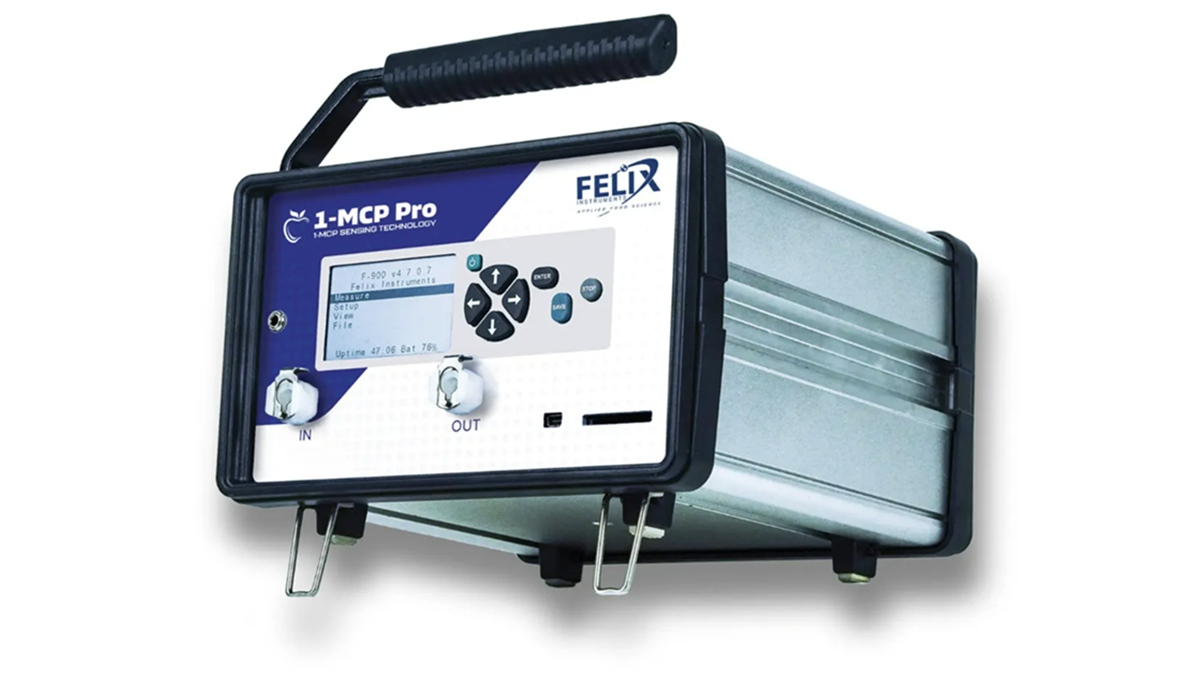Measurements
NIR for nectarines and peaches
Quality parameters are useful in various stages of a supply chain and are used for different purposes. In peaches and nectarines, the quality parameters have been used to estimate maturity, select fruits for processing, and monitor quality. Near Infra-red (NIR) spectroscopy can be used for the non-destructive, rapid, and cost-effective chemical analysis of the internal attributes. The application of this technology for these fruits has just begun, so we provide a brief overview below. Peaches and Nectarines are Different Fruits Though the two fruits, peaches and nectarines, are similar in appearance and taste, they are actually very closely related variants. There is also a difference in their nutritional value. The peach is native to china and its botanical name is Prunus persica, while the nectarine?s botanical name is Prunus persica var. Nucipersica. The nectarine has been described as the fuzz-less variety of peaches, and some seeds of
18 June, 2020
Quality parameters are useful in various stages of a supply chain and are used for different purposes. In peaches and nectarines, the quality parameters have been used to estimate maturity, select fruits for processing, and monitor quality. Near Infra-red (NIR) spectroscopy can be used for the non-destructive, rapid, and cost-effective chemical analysis of the internal attributes. The application of this technology for these fruits has just begun, so we provide a brief overview below. Peaches and Nectarines are Different FruitsThough the two fruits, peaches and nectarines, are similar in appearance and taste, they are actually very closely related variants. There is also a difference in their nutritional value. The peach is native to china and its botanical name is Prunus persica, while the nectarines botanical name is Prunus persica var. Nucipersica. The nectarine has been described as the fuzz-less variety of peaches, and some seeds of nectarine can produce peach trees, so grafting is the safest way of propagating nectarines. Peach and nectarine are climacteric and, given their other similarities, scientists, as well as economists, link them together. The methods of fruit measurements and timing of analysis are also similar, which is another reason why they are often combined. Older Methods of Quality Parameters EstimationThe traditional quality parameters are changes in the color of skin and flesh and firmness of the fruits. However, both are subjective and require personnel with skill and experience. Soluble solids content (SSC) and concentration of acids estimated in the laboratory are more reliable measures of maturity. Firmness is not useful as an indicator for maturity by itself, as there can be differences within a variety due to fruit size, climate, and agricultural practices. Moreover, the penetrometer, which uses a plunger of about 8 mm, involves destructive piercing of fruits.Soluble solids content (SSC) can be measured by portable Refractometers, which require the destruction of ten fruits to produce a representative juice sample. Also, the large number of varieties of peaches and their differences in sweetness can make SSC challenging to use as a maturity indicator.Acid content has to be estimated, as a favorable sugar/acid ratio is desired to maintain flavor in peaches and nectarines sold as fresh fruits. Therefore, finding the titrable acid content is essential during retailing. Traditionally, the colored indicator or pH meter methods were used. Both these methods require a simple laboratory and involve destructive sampling of juice from ten fruits. Moreover, the colored indicator analysis is cumbersome and requires titration with sodium hydroxide and the indicator phenolphthalein. Sodium hydroxide is corrosive to the skin in undiluted form and the indicator is explosive; both chemicals pose health and safety risks. Read full text




.jpg)






